9 plants never to grow next to zinnias – expert advice to maintain vibrant, mood boosting blooms
Discover key plants to avoid growing alongside zinnias so you can raise strong healthy plants and enjoy plenty of bold color
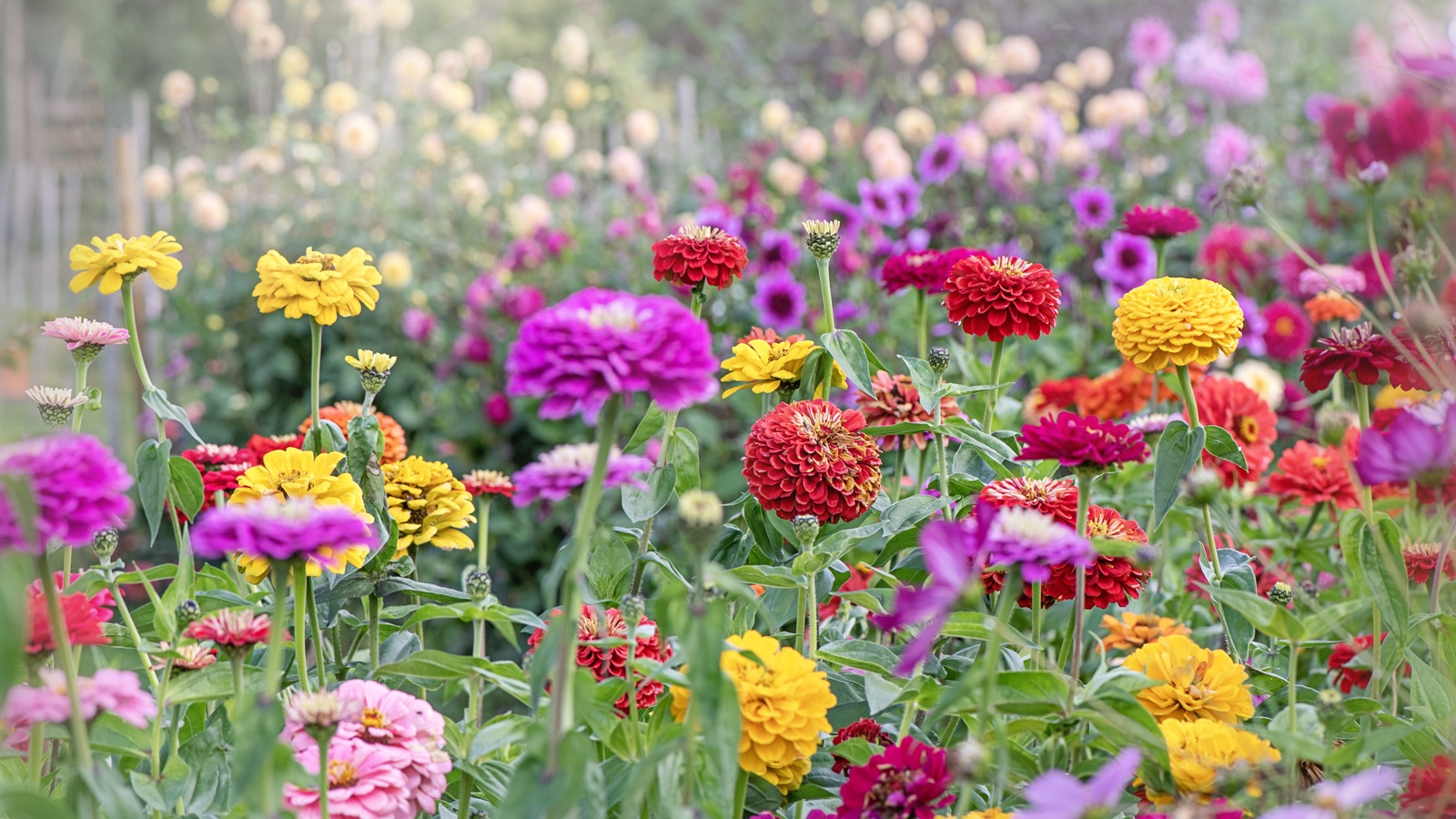

If you love a summer yard filled with colorful blooms, zinnias have to be at the top of your planting list. With flowers in every shade from vibrant citrus to delicate neutrals they are hugely enticing, but did you know there are many plants to avoid growing alongside them.
Although relatively quick to grow, these popular annuals can be easily overwhelmed by hungry feeders, unruly ground huggers and voracious climbing plants. Stealing essential nutrients from the soil and shading out the sun, it’s well worth knowing how to grow zinnias so you can cater for their needs and ensure a successful floral display.
Helping you to plan your pots and borders, we’ve pooled our experience with leading horticultural experts to save you the heartbreak of a failed summer show. Here are those plant pairings to avoid and ideas on which flower lookalikes to opt for instead.
9 plants to avoid growing next to zinnias
There are a number of plants that should not be paired with zinnias, due to incompatible growing needs and habits. Discover which companion plants need to be avoided and safer floral substitutes.
1. Impatiens
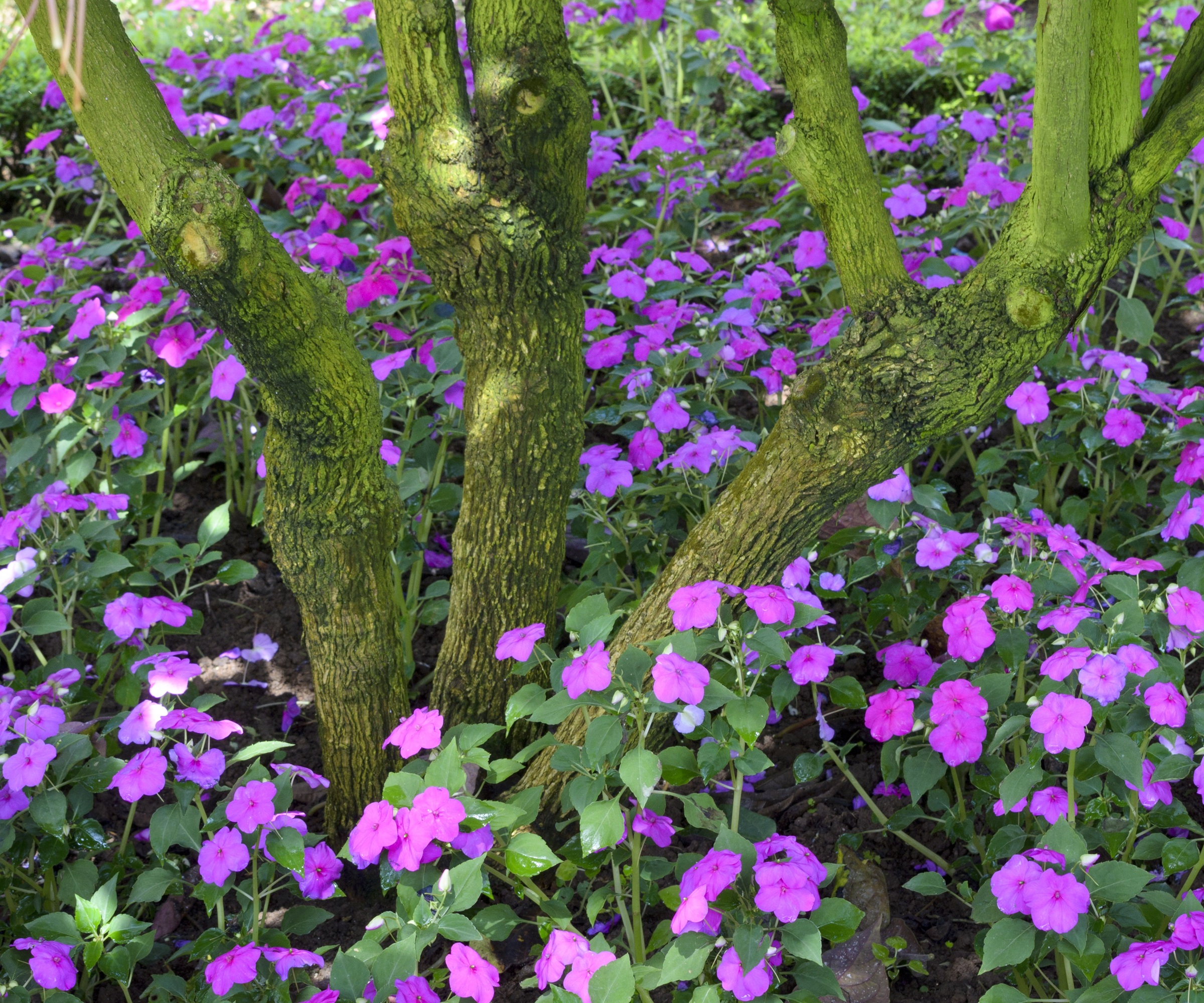
Bright, breezy and easy to grow, impatiens - specifically Impatiens walleriana is one of the most popular summer annuals to go out and buy. Perfect for adding color to beds, containers, window boxes and entrance ways, you could be tempted to pair it with the equally vibrant zinnia but you would be disappointed.
‘This classic annual flower looks like it would be a great companion for zinnias, but the two need very different growing conditions,’ says Costa Farms Horticulturalist Justin Hancock.
‘Zinnias want a spot in all-day sun to thrive and bloom well; impatiens want protection from the blazing summer sun. Instead, look for SunPatiens hybrids. These plants get a bit bigger, but otherwise have a similar look. And they appreciate the same amount of sun as zinnias.’
Design expertise in your inbox – from inspiring decorating ideas and beautiful celebrity homes to practical gardening advice and shopping round-ups.
Walmart have a wide selection of SunPatiens hybrids to choose from. We particularly like the dreamy Compact Blush Pink SunPatiens.
2. Black Walnut
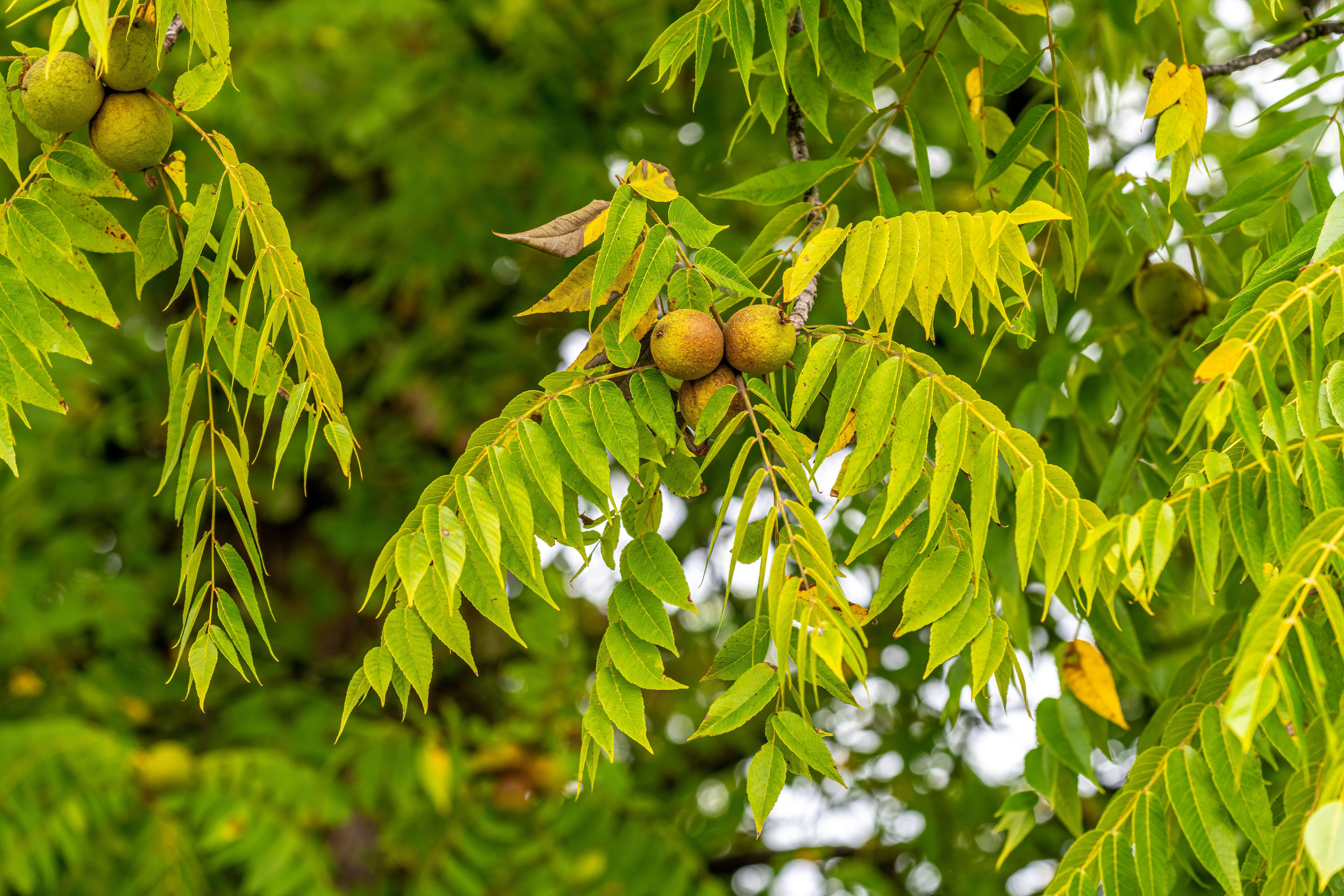
A majestic and long-lived addition to any yard, the black walnut - Juglans nigra – will undoubtedly turn heads, but these trees hold a secret that’s well worth knowing about.
‘If you have a black walnut tree don’t be tempted to underplant with zinnia,’ cautions Justin. ‘Black walnut roots release a chemical in the soil that can inhibit the growth of some plants, including these pollinator favorites.’
A naturally occurring toxin, Juglone is an allelopathic compound that is secreted into the soil through a walnut tree’s roots. Inhibiting nearby plant growth, it acts as defence mechanism helping combat rival plant growth and competition for moisture and nutrients.
‘If you want a tree near your zinnias, look at a variety like Panicle Hydrangea, Hydrangea paniculata, which casts less shade and is much more friendly to its neighbors,’ adds Justin.
Nature Hills have a wide selection of panicle hydrangeas including the ever popular Little Lime.
3. Spotted dead-nettle
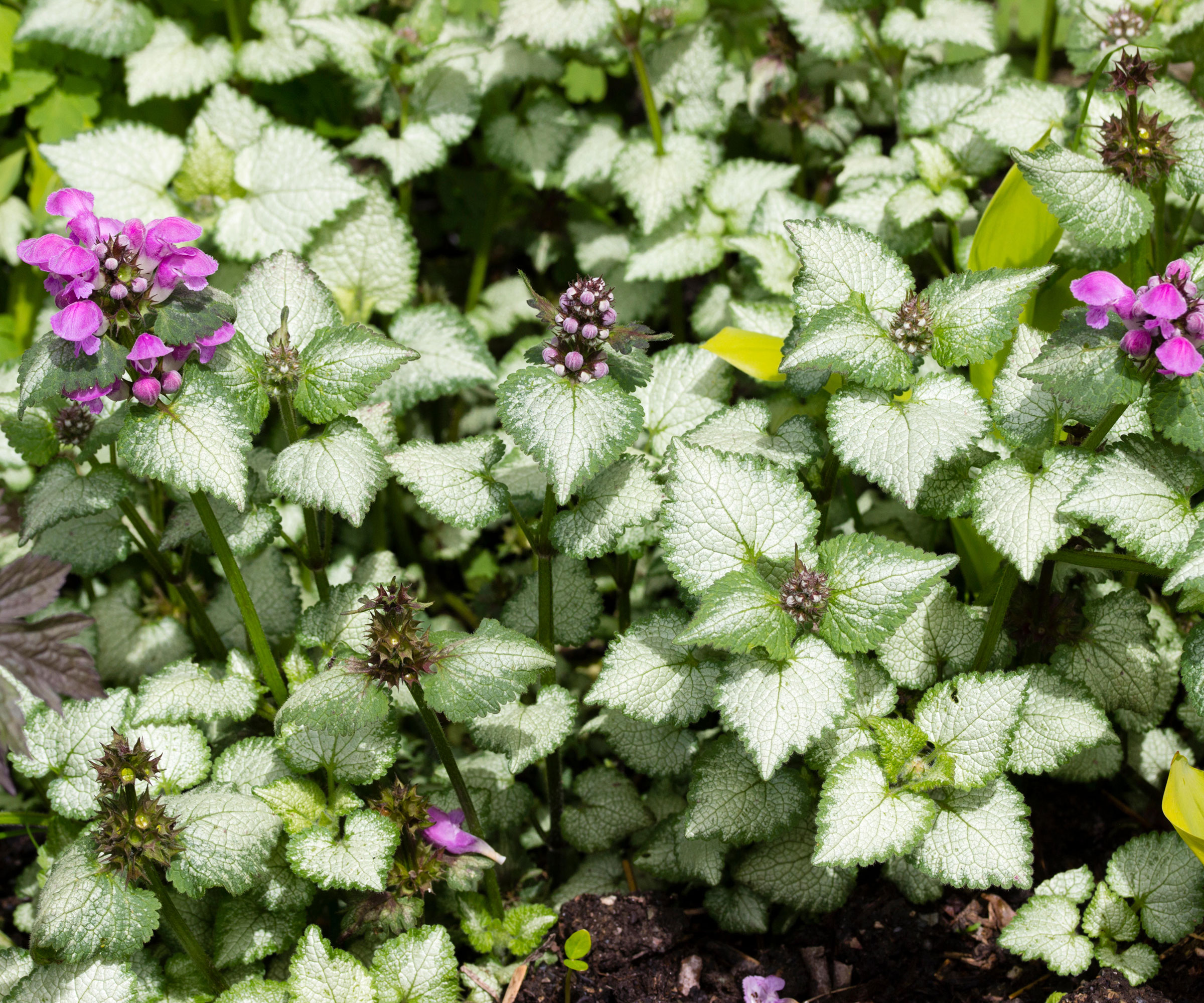
Sitting proudly on their tall, upright stems, zinnia blooms are a magnificent sight. Whether you opt for a soft pastel, dark and moody or cheery flowering variety, you may well be tempted to showcase these blooms by underplanting them with a dense and leafy ground cover plant such as Alchemilla mollis, brunnera or spotted dead-nettle Lamium maculatum but this would be a key planting mistake.
The key issue with this type of plant pairing is that zinnias are rather prone to fungal diseases such as powdery mildew which is often caused by a lack of air circulation. Surrounding the stems and lower leaves with a dense ground cover plant will inevitably exacerbate the issue and lead to weak and sickly growth that quickly perishes.
A far safer option, which is just as attractive, is to opt for feathery leaved dill. Known to repel harmful aphids and attract mutually beneficial pollinators, this tall, delicate and aromatic herb thrives in the same sunny, free draining conditions as zinnias without hindering ventilation.
4. Lavender
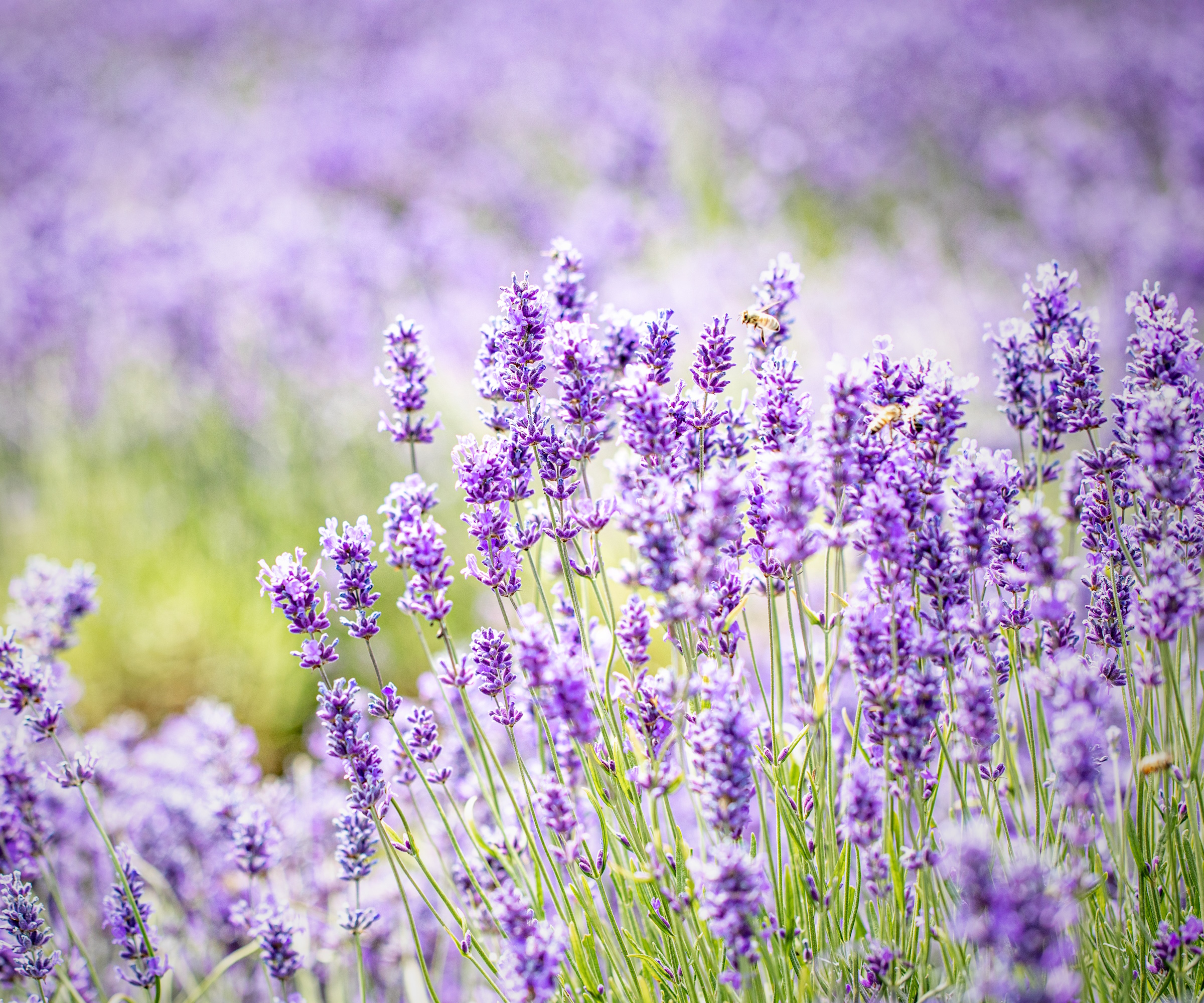
Good plant neighbours usually rely on liking the same growing conditions, so it’s no surprise that knowing a little more about where each plant comes from can be hugely helpful when planning a border.
Although soil PH and water retention can be addressed with the addition of specialist composts, grit and organic matter, the easiest, least stressful and most environmentally friendly approach is to choose the right plant, for the right situation.
Zinnias are relatively thirsty plants, with a healthy appetite for nutrients so however dreamy they may look intermingled with other cottage garden favorites, double check their origins and planting requirements.
‘Lavender naturally prefers dry, lean soil, while zinnias enjoy richer, more consistently moist soil,’ says Carrie Spoonemore, Co-founder of Park Seed's app From Seed to Spoon.
If you are determined to combine this heavenly combination, opt for lavender varieties that are more tolerant of wetter conditions such as Lavandula angustifolia ‘Havana’. A strong floral lookalike to consider is Nepeta subsessilis – Short-stalked catmint. A clump forming perennial with lavender colored blooms on lax spikes, it is better adapted to moist soil and can cope with part shade too.
Catmint plants are available at Nature Hills.
5. Mint
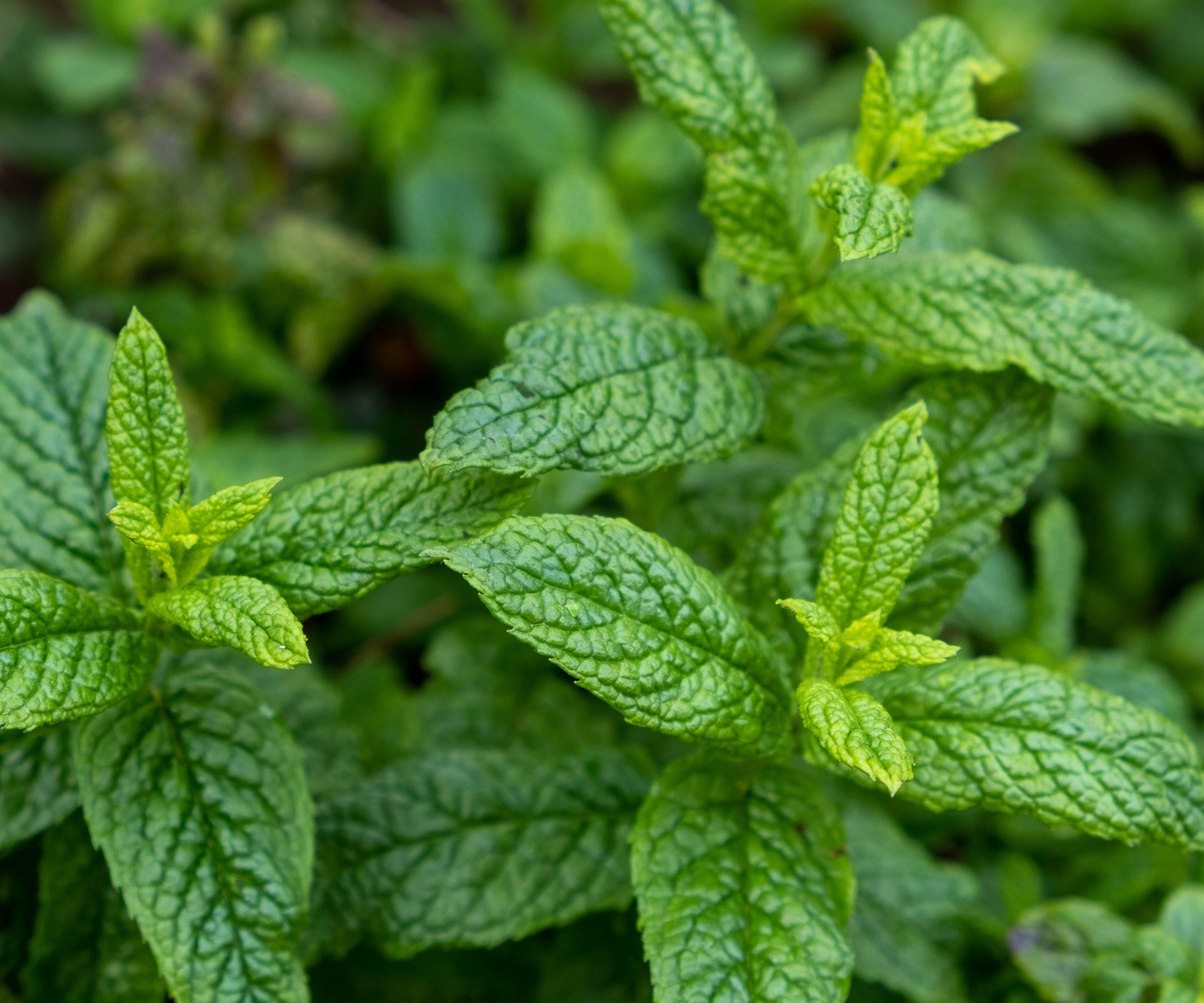
Zinnias need sun, moist soil and good ventilation to thrive, and do not cope well with thuggish behaviour. Fast growing ground cover plants such as mint, Mentha spicata can quickly overwhelm these tender blooms.
‘Common mint grows aggressively and can compete for nutrients and space, especially in shared containers or tight beds,’ says Carrie Spoonemore.
More sympathetic, leafy beauties to grow, include common nasturtiums with their rounded, peppery green leaves, basil and parsley. All preferring in a moist, sunny spot, they are generally well behaved and won’t steal goodness from the soil or grow too quickly.

Justin Hancock is a Costa Farms horticulturist with over 25 years in the industry. A plant enthusiast and educator, he has a degree in horticultural science and has worked in garden centers and botanical gardens, as a garden designer, and in garden publishing (including at Better Homes and Gardens). He has experience gardening across the country, from Minnesota to Miami to Oregon. Justin is also co-host of the Costa Farms podcast Plant Rx.

Carrie Spoonemore, co-founder of Park Seed’s app 'From Seed to Spoon' has dedicated herself to empowering people to take control of their health and environment by growing their own food. Her journey alongside her husband, Dale Spoonemore, in creating a platform that demystifies gardening and promotes a healthier lifestyle, has made a significant impact on individuals around the globe
6. Cucumber
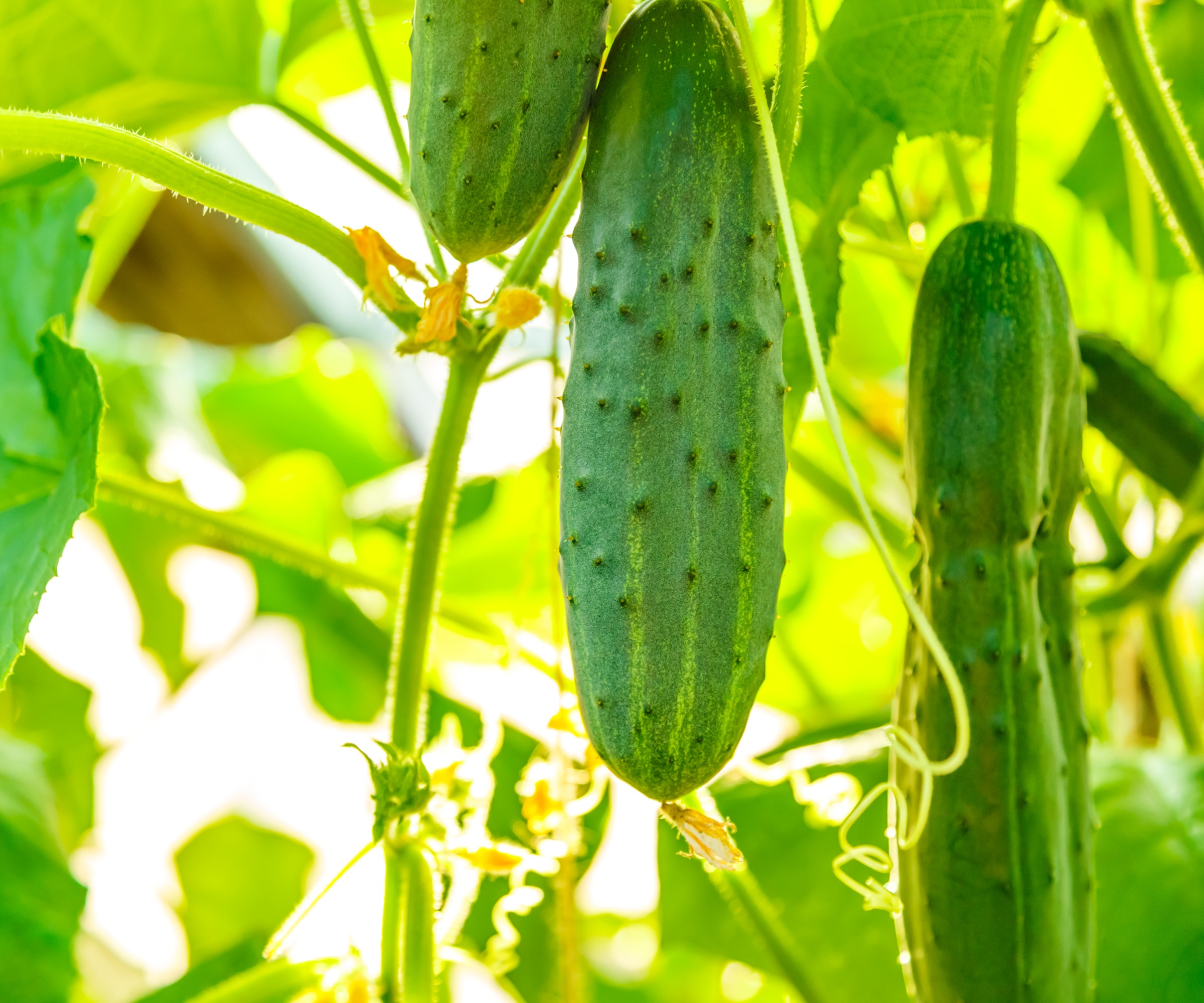
If you are looking for colorful annuals to attract pollinators to a veg patch, zinnias may seem an obvious choice. Preferring the same amount of water and sun as many crops, including cucumbers, they appear to be the perfect companion, but Plant Expert Katie Sunderlage advises caution.
‘Zinnia and cucumbers have the same nutritional needs and as cucumbers are very heavy feeders, they will likely deplete the soil of the nutrients that will also help Zinnias flourish.’ She also adds, ‘cucumbers also attract cucumber beetles and are affected by powdery mildew which both can cause problems for the zinnias planted in the same area.’
Instead, why not swap these hungry feeders with less greedy counterparts such as zucchini or squash. ‘They both require full sun and have the same watering needs, but enough nutrients will remain in the soil to help both thrive. Zinnia will also help attract essential pollinators to the zucchini and/or squash plants for high yields,’ she explains.
7. Sunflower
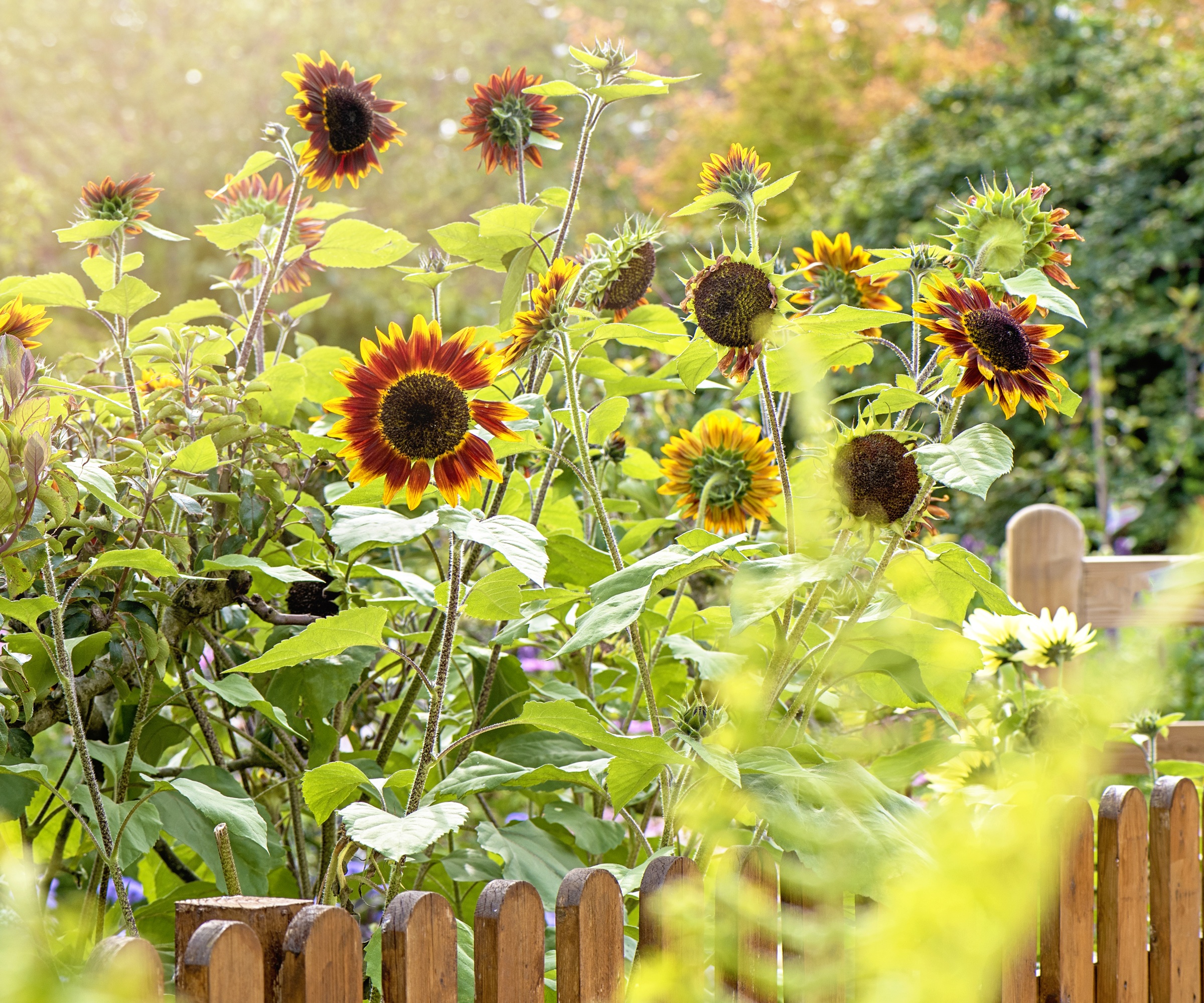
If you are planning a cut flower garden chances are zinnias and sunflowers, Helianthus annus, will be at the top of your ‘to grow’ list, but before you get sowing and planting stop and think again.
Plant expert Katie, along with experienced flower farmers advise to keep them well apart. ‘It’s common to want to grow different varieties of cut flowers in the same vicinity of each other but unfortunately, sunflowers and zinnias should not be grown together,’ she explains.
‘Both require full day sun to bloom well and as sunflowers continue to grow, they will shade out any zinnias growing near them. The lack of sun can prevent zinnias from germinating and flowering.’
For a taller plant to compliment zinnias, cosmos are a great option. ‘They both prefer full sun and regular watering, and unlike the sunflowers, cosmos have a fine texture and airy growing habit that will not block out the sun,’ says Katie.
These colorful plants are also hugely popular with pollinators and flower at the same time, creating a dreamy display.

Operations Manager at Holland Group, managing the customer service department and purchasing. Katie has been in the green industry since 2005 in the Greater Milwaukee area, earning her degree in Horticulture in 2008. She has been able to share her love for plants working in multiple garden centers, in sales positions and most recently in an online retail platform at Holland Group.
8. Morning Glory
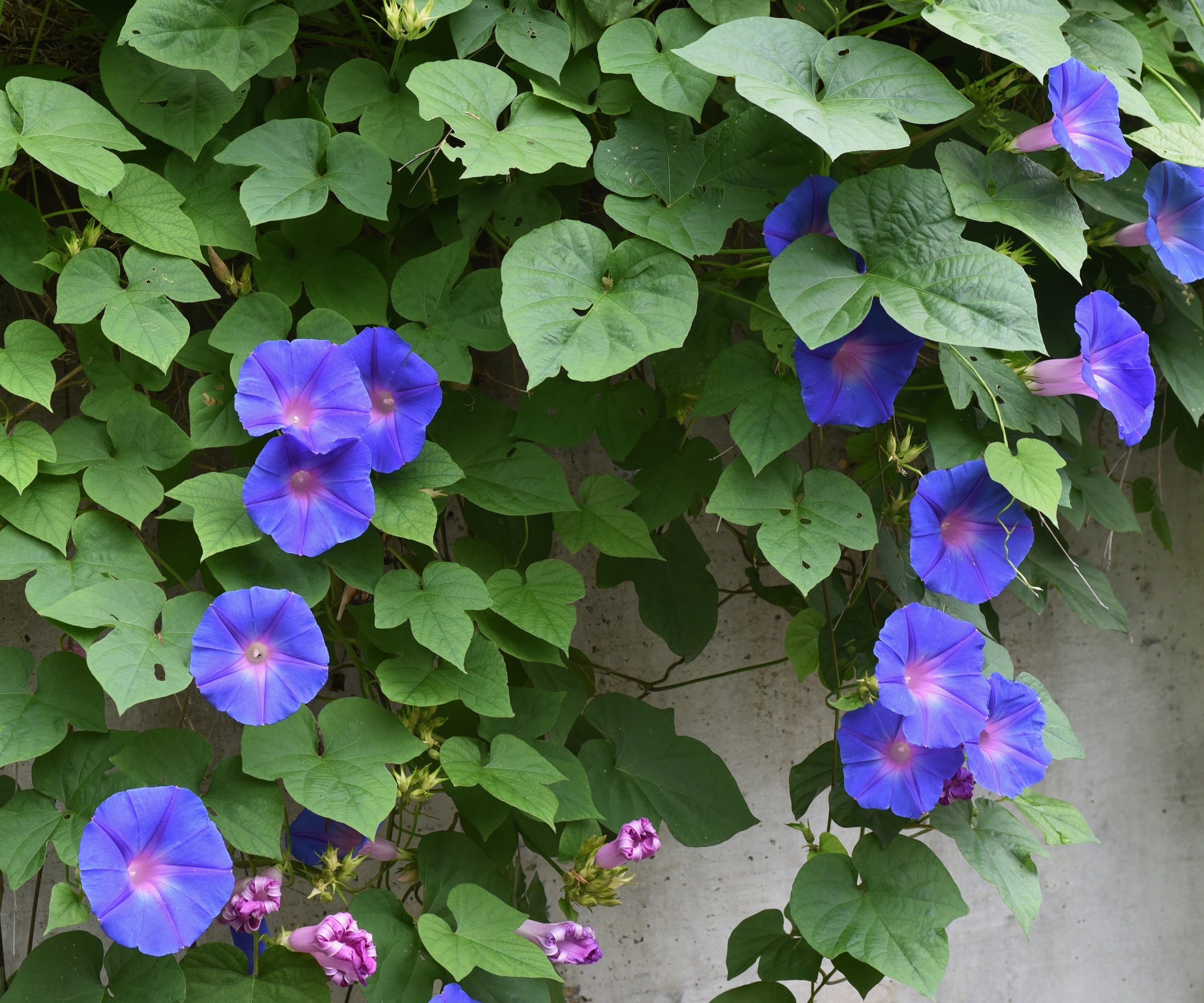
Fast growing with vigorous roots and sprawling stems morning glory - Ipomoea tricolor – is definitely one plant not to grow next to zinnias. Sun loving and happiest in moist, free draining soil it will quickly outgrow its stately neighbours, swamping these bright breezy annuals, entwining their upright stems with their far reaching and surprisingly strong tendrils.
Reaching up to 4’9’’ – 6’5’’ (1.5-2m) these summer flowering vines are best left to scramble over fences, up trellis and over obelisks so you can admire their array of trumpet blooms, in shades of blue, violet and pink.
Looking for a better-behaved flower lookalike, why not go for petunias? Their large, saucer like blooms come in every color, and many boldly colored varieties are splashed or delicately veined with white.
Long flowering and low growing, these tender annuals will allow zinnias to thrive happily alongside them without competing for nutrients or sun light.
9. Tomato
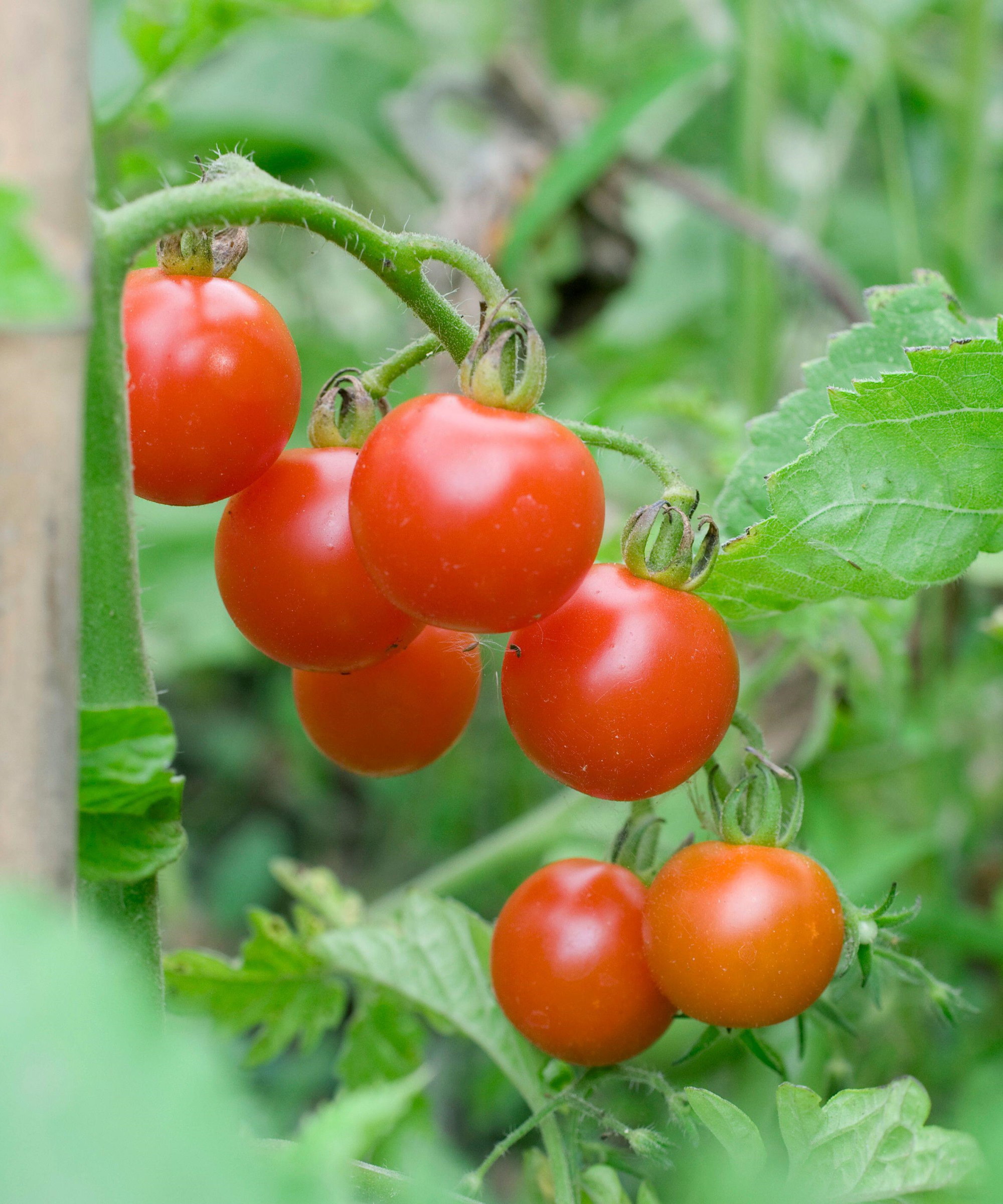
Companion planting in a vegetable garden can be hugely beneficial to crops, attracting pest feasting insects and essential pollinators, but some combinations can be problematic. Growing tomatoes alongside zinnia's is one pairing to avoid, for several lesser known reasons.
Hungry feeders, tomato plants require large amount of phosphorous and potassium to produce plentiful and healthy fruits. With zinnias require the exactly same nutrients to bloom, these plants quickly find themselves in competition and it's usually the showier and more temperamental bloomers that lose out.
There are other reasons to steer clear of this plant pairing too. Tomatoes tend to be sprawling and speedy growers, which typically leads them to crowd out the more upright and slower growing zinnias.
With reduced sunlight and air flow, these flowering beauties can quickly find it hard to thrive, often succumbing to harmful mildew forming on the stems and foliage. Tomatoes are also hugely attractive to whitefly and aphids, which can find the soft, tender growth of zinnias irresistible.
If you are intrigued to find out more about plant pairings to go for and avoid, take a look at these companion planting mistakes and the best flowers to plant in a vegetable garden to deter pests.

Journalist Jill Morgan has spent over 20 years writing and editing gardening, interior and property features. Titles she has worked on include The English Home, House Beautiful, Ideal Home, Houzz and Modern Gardens and she writes regularly for H&G as a Contributing Editor. Whilst she is a dab hand at renovation projects and DIY, she is happiest when out digging in the garden or planning a new border.
You must confirm your public display name before commenting
Please logout and then login again, you will then be prompted to enter your display name.


![Greenwood Nursery: Live Perennial Plants - 'walkers Low' Catmint + Nepeta × Faassenii - [qty: 2x Pint Pots] - (click for Other Available Plants/quantities)](https://cdn.mos.cms.futurecdn.net/FNJNvKvZLAghgAjMCTwbPj.jpg)